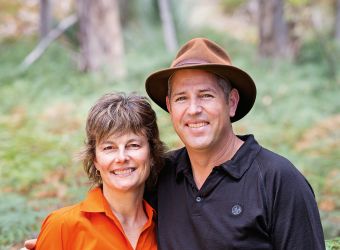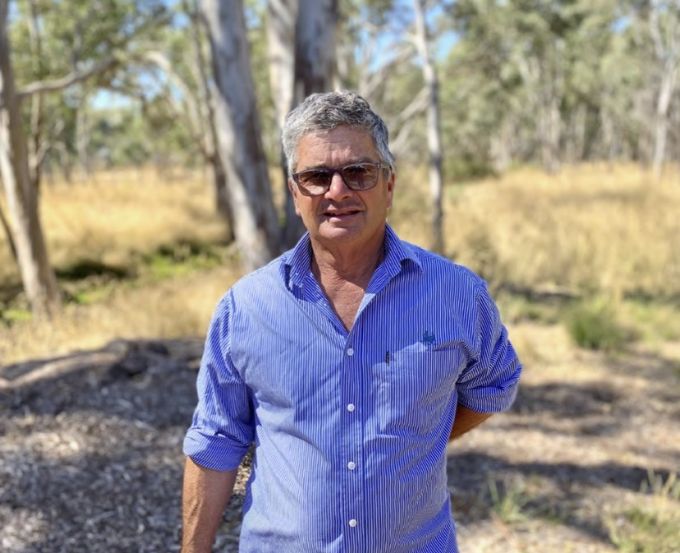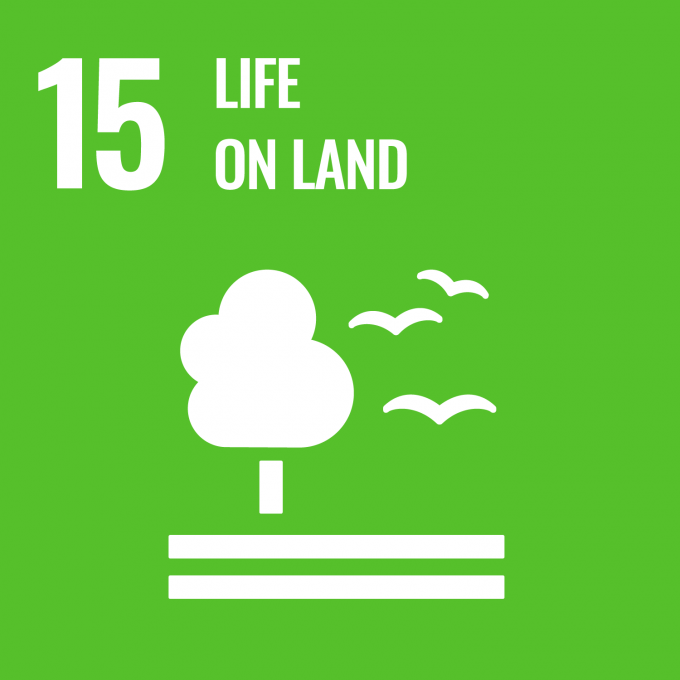Itinerary
Tour day-by-day
-

Day 1: Cygnet Valley & North Coast
Begin with a visit to Duck Lagoon, a freshwater habitat for ducks (regular haunt for freckled ducks when they disperse from outback waterways), swans and a range of other species. Classic Australian landscapes abound with massive red-gums reflected in still waters. These stately gums are home to pardalotes and a range of honeyeaters, including the white-eared, white-naped and brown-headed. This is also a prime spot for Koalas, which are partial to the Eucalypts along the creek line.
Continue to a nearby private sanctuary known as Cygnet Park, where a large scale rewilding project has converted former pasture into diverse wildlife habitat. Get an orientation to the Island as your guide prepares a delicious barbeque of fresh fish, halloumi, grilled potatoes and salad, served with some choice local wines.
 “Kangaroo Island has huge swathes of conservation land, but the tall forest we explore here only ever covered about one percent of the island and none of this is included in the reserve system. (The environmental group who carried out the revegetation) used 135 species of plants – including a variety of herbs, ground cover plants and mid-storey vegetation – to showcase that it was possible to do more than simply plant trees. Nature is complex – it is dense, messy, colourful and diverse. By using solid science and planning based on soil type and topography, they have given nature a restorative boost.”
“Kangaroo Island has huge swathes of conservation land, but the tall forest we explore here only ever covered about one percent of the island and none of this is included in the reserve system. (The environmental group who carried out the revegetation) used 135 species of plants – including a variety of herbs, ground cover plants and mid-storey vegetation – to showcase that it was possible to do more than simply plant trees. Nature is complex – it is dense, messy, colourful and diverse. By using solid science and planning based on soil type and topography, they have given nature a restorative boost.”Craig Wickham - Owner & Guide
After lunch, board a rigid-hulled inflatable boat operated by Kangaroo Island Marine Adventures to explore the Island from the ocean. Photographic opportunities incorporate coastal landscapes, raptors (white-bellied sea-eagles are the most frequently encountered species), cormorants, long-nosed fur-seals and bottle-nosed dolphins. Seasonally this can include a “swim with” experience, which offers underwater photography opportunities in shallow water for guests with the appropriate equipment.
End the day on the north coast in the Stokes Bay valley, seeking out the opportunity to photograph Kangaroo Island kangaroos as they emerge to feed.
Overnight Accommodation: Mercure Kangaroo Island Lodge (dinner/bed/breakfast). There are various levels of accomodation available (3-5 star, farmstay, B&Bs). Please enquire to find out options.
-

Day 2: Flinders Chase National Park
Begin the day in the Island’s northwest in an important private wildlife refuge with Kangaroo Island Land for Wildlife. Here, gain an insight into (and take part in) the fantastic conservation work conducted by Pat, Heidi and their team to assist some of the lesser-known (and often nocturnal) native animals. On the journey west, keep an eye out for yellow-tailed black-cockatoos feeding in Banksias and Radiata pines.
Lunch is a picnic enjoyed in the bush and consists of marinated poached chicken, fresh salads, cheeses and fantastic South Australian wine, beer, soft drinks and spring water.
After lunch, travel into Flinders Chase National Park through Rocky River, where the pastures provide winter grazing and nesting sites for Cape Barren geese.
Explore the massive natural sculptures of Remarkable Rocks, set amid coastal heath grading into mallee. The rounded tors with iconic orange-red lichens are a favourite with photographers from around the globe.
Cape du Couedic provides occasional access to oceanic species such as albatross and shearwaters during southerly gales. Right on the Cape is Admiral’s Arch, a spectacular sea cave, where a boardwalk provides an excellent platform to photograph terns and a large population of long-nosed fur-seals. Territorial battles between males peaks in January during a fur-seal breeding season that runs from November through February.
 “The south-west corner of the island including Cape Du Couedic and Remarkable Rocks, is really diverse and spectacular. Along with the Long-nosed Fur-seals, I’ve seen Great White Sharks from the clifftops there. Often through the winter, we’ll also see whales, so all of those wildlife encounters in a spectacular coastal setting is good fun."
“The south-west corner of the island including Cape Du Couedic and Remarkable Rocks, is really diverse and spectacular. Along with the Long-nosed Fur-seals, I’ve seen Great White Sharks from the clifftops there. Often through the winter, we’ll also see whales, so all of those wildlife encounters in a spectacular coastal setting is good fun."Craig Wickham - Owner & Guide
At the days’ end, spend some time in the lighthouse precinct – the Lighthouse keepers cottages are fine examples of Federation architecture, and the light tower showcases excellent stonemasonry skills.
Overnight Accommodation: Mercure Kangaroo Island Lodge (dinner/bed/breakfast). There are various levels of accomodation available (3-5 star, farmstay, B&Bs). Please enquire to find out options.
-

Day 3: Seal Bay & D'Estrees Bay
The day commences with a visit to an Australian sea-lion colony at Seal Bay. These photogenic residents bask on a white sandy beach protected by offshore reefs and headlands, which provide critical breeding areas. There are year-rounded opportunities to photograph mothers and their pups, as they have a continuous breeding cycle. The beach is also home to hooded plovers, crested and Caspian terns, sooty oystercatchers and a selection of cormorants.
Murray Lagoon, the Island’s largest wetland, is home to an array of bush and water birds and offers seasonally diverse landscapes well worth exploring.
D’Estrees Bay is a long sweeping beach graduating from a protected marine meadow with a seagrass strewn beach often frequented by hooded plovers to an exposed coast to the south. Along the way is Point Tinline, where an active eastern osprey nest was first documented in 1853.
Further south is a protected lagoon, providing amazing reflections of roosting terns. November through March, it is often frequented by visiting waders such as Golden Plovers and Ruddy Turnstones. Local surfers often frequent a break at the southern end of the bay so we can check on the chance for some action shots.
 "I spent most of my childhood years here and know the island intimately. I’m thrilled to use my knowledge and show visitors what the island is all about. We have so much habitat in a very confined area on Kangaroo Island, that birds are easy to find without much travelling. We’re spoilt when it comes to birds.”
"I spent most of my childhood years here and know the island intimately. I’m thrilled to use my knowledge and show visitors what the island is all about. We have so much habitat in a very confined area on Kangaroo Island, that birds are easy to find without much travelling. We’re spoilt when it comes to birds.”Tim Williams - Guide
The bush surrounding American River is home to glossy-black cockatoos, galahs, beautiful firetails, scarlet robins and crimson rosellas. Significant aggregations of black swans, pelicans, musk ducks and a range of waders forage on the shoreline, and late afternoon reflections of boats moored in the channel provide additional photo opportunities.
Overnight Accommodation: Mercure Kangaroo Island Lodge (dinner/bed/breakfast). There are various levels of accomodation available (3-5 star, farmstay, B&Bs). Please enquire to find out options.
-

Tour details
Pick-up and Drop Off Point: Kingscote Airport or accommodations.
Pick-up and Drop-off Time: Approximately 9:00am day one and 6:00pm day three.
Languages: Translation services private tours available for French, German, Italian and Spanish (must be a private tour)Recent Awards
WINNER TripAdvisor Certificate of Excellence 2018 • 2017 • 2016 • 2015 • 2014 • 2013
LISTED Top 5 Wildlife Guides by Outside Go Magazine 2015
WINNER Outstanding Contribution to the Tourism Export Industry 2015 by the Australian Tourism Export Council
WINNER World's Best Specialist Guide by Wanderlust 2021How you'll be making a positive impact
We have aligned our sustainability vision with the United Nation’s Sustainable Development Goals (SDGs). Citizen Science with Exceptional Kangaroo Island
Citizen Science with Exceptional Kangaroo Island
Exceptional Kangaroo Island contributes observations of flora & fauna via iNaturalist, the world’s leading global social biodiversity network. This platform allows our team to create research-quality citizen science data that enables a more detailed picture of our national biodiversity, and assists bodies such as the CSIRO, ecologists and other decision makers to deliver better outcomes for the environment and our species.
 Protecting Subspecies and Iconics of Kangaroo Island
Protecting Subspecies and Iconics of Kangaroo Island
To reinforce responsible behaviours around iconic species unique to the island, Exceptional Kangaroo Island has developed a Wildlife Code of Conduct and Guest Briefing Card referencing responsible behaviours for iconic species including the Glossy-Black Cockatoo, Hooded Plover, Australian Sea-lion, Kangaroo Island Kangaroo and Short-beaked Echidna.
 Creating Feeding Habitat for the Glossy Black Cockatoo
Creating Feeding Habitat for the Glossy Black Cockatoo
Exceptional Kangaroo Island’s tour base in Cygnet River includes an aerobic waste water management unit that captures and recycles water from the office, commercial kitchen, bathrooms and wash bays. That water is then used to water the surrounding plants and trees - including the primary food source for the endangered Glossy Black-Cockatoo.
 Developing Partnerships To Meet Sustainability Goals
Developing Partnerships To Meet Sustainability Goals
Exceptional Kangaroo Island have developed a number of partnerships with key environmental organisations on Kangaroo Island and more broadly in South Australia, including Bio·R, Pelican Lagoon Research Station, Kangaroo Island Land for Wildlife, National Parks & Wildlife South Australia and Birdlife Australia.
Media Gallery
-

Wine & Wildlife of the Southeast
From $6,228 USD
12 days/11 nights
Available months: January to December.
-

Marsupial and Bird Photography Safari
From $10,870 USD
13 days/12 nights
Available months: January to May, September to December.
-

Australia's Big 5
From $6,449 USD
14 days/13 nights
Available months: January to March, October to December.










